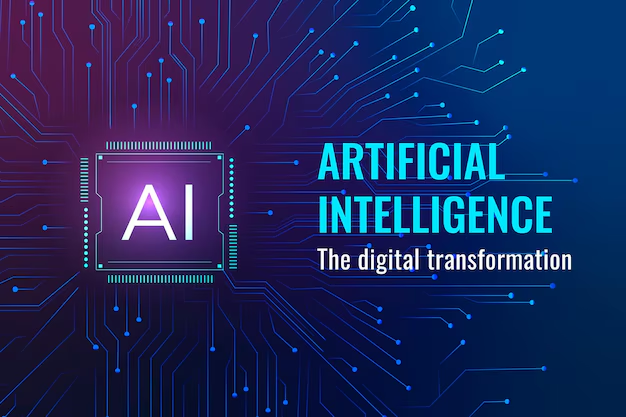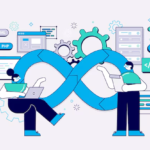
“How AI and Machine Learning Are Transforming Industries: A Comprehensive Overview”
Artificial Intelligence (AI) and Machine Learning (ML) are no longer just buzzwords—they are actively reshaping various industries by enabling systems to learn from data and make intelligent decisions. These technologies are driving innovation, improving efficiency, and creating new opportunities across sectors. In this blog, we’ll explore how AI and ML are making a significant impact in different fields.

1. Understanding AI and Machine Learning
What is Artificial Intelligence?
Artificial Intelligence refers to the simulation of human intelligence processes by machines, especially computer systems. It involves creating algorithms and systems that can perform tasks typically requiring human intelligence, such as understanding natural language, recognizing patterns, and making decisions. AI can be categorized into two types: Narrow AI, which is designed for specific tasks (like voice assistants), and General AI, which aims to perform any intellectual task that a human can do (though this is still theoretical).
What is Machine Learning?
Machine Learning, a subset of AI, focuses on the use of data and algorithms to mimic the way humans learn. Instead of being explicitly programmed to perform a task, ML systems use statistical techniques to identify patterns and make predictions based on data. The three main types of ML are:
- Supervised Learning: The system is trained on labeled data, where the input and output are both known.
- Unsupervised Learning: The system works with unlabeled data, identifying patterns and structures on its own.
- Reinforcement Learning: The system learns by receiving feedback from its actions, improving its performance over time.
2. AI and ML in Healthcare
Predictive Analytics
AI and ML are revolutionizing healthcare by enhancing predictive analytics. These technologies can analyze vast amounts of medical data to predict patient outcomes, personalize treatments, and identify potential health risks. For example, AI algorithms can forecast disease outbreaks or predict patient deterioration, allowing healthcare providers to take proactive measures.
Medical Imaging
In medical imaging, AI is making strides in analyzing X-rays, MRIs, and CT scans with remarkable accuracy. AI-powered tools can detect early signs of diseases such as cancer, often identifying abnormalities that might be missed by the human eye. This not only improves diagnostic accuracy but also accelerates the process, enabling timely interventions.
3. AI and ML in Finance
Fraud Detection
AI and ML are crucial in the financial industry, particularly in fraud detection. Machine learning algorithms analyze transaction patterns and detect anomalies that may indicate fraudulent activities. By continuously learning from new data, these systems can adapt to evolving fraud tactics, providing enhanced security for financial transactions.
Algorithmic Trading
Algorithmic trading is another area where AI and ML are making an impact. Trading algorithms use machine learning to analyze market trends, execute trades at optimal times, and manage investment portfolios. These algorithms can process vast amounts of data much faster than human traders, leading to more informed and efficient trading decisions.
4. AI and ML in Retail
Personalized Shopping Experiences
In the retail sector, AI and ML
are transforming the shopping experience by providing personalized recommendations. AI algorithms analyze customers’ browsing and purchasing behaviors to offer tailored product suggestions. This level of personalization not only enhances the customer experience but also drives sales and increases customer loyalty.
Inventory Management
AI and ML also optimize inventory management by predicting demand trends and managing stock levels more efficiently. Retailers use predictive analytics to forecast which products will be in high demand and adjust their inventory accordingly. This reduces overstocking and stockouts, ensuring that the right products are available at the right time.
5. AI and ML in Transportation
Autonomous Vehicles
One of the most exciting applications of AI and ML in transportation is autonomous vehicles. Self-driving cars use a combination of sensors, cameras, and machine learning algorithms to navigate roads, recognize obstacles, and make real-time driving decisions. This technology has the potential to significantly reduce traffic accidents, optimize traffic flow, and transform the way we commute.
Route Optimization
AI and ML also improve logistics and route optimization for delivery services. By analyzing traffic patterns, weather conditions, and delivery schedules, these systems can determine the most efficient routes for transportation, reducing fuel consumption and delivery times.
Conclusion
AI and Machine Learning are driving significant transformations across various industries, from healthcare to finance, retail to transportation. These technologies are enhancing efficiency, improving decision-making, and creating new opportunities for innovation. As AI and ML continue to evolve, their impact on industries will only grow, reshaping the future of how we live and work.
Stay tuned for more insights into the world of AI and ML, and how these technologies are shaping the future!









